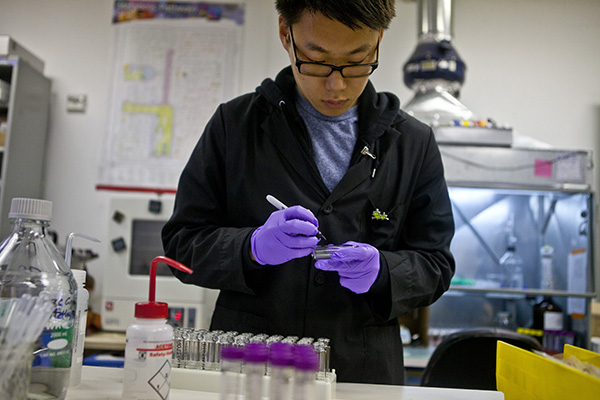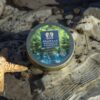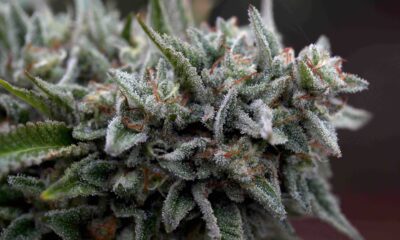
Cannabis
What’s Ahead for Laboratory Regs & Compliance in California?
An in-depth look at changes in laboratory regulations and cannabis testing as California implements the first medical cannabis reforms in 20 years.
On May 5, the California Bureau of Medical Cannabis released proposed regulations for medical cannabis testing laboratories. Despite being the first market in the nation to offer cannabis tested for potency and contamination, California has no statewide mandatory testing requirements; it is left up to individual localities (such as Berkeley) or, more commonly, the dispensaries. Meanwhile, other states have enacted rules requiring analysis as part of their medical or recreational cannabis laws. These requirements often mirror regulatory rules used for other industries such as pharmaceuticals, food and environmental testing and, as such, are far more strict than those that the California market has dictated. From lower detection limits on pesticide contaminants to tighter method validations and meticulous documentation, the standards of quality upon which every other consumer product is graded are coming to the nation’s largest cannabis market. And while for some businesses this may mean big changes in workflow, staying informed and proactive will help minimize any loss in productivity during this transition.
At a Glance
The proposed testing requirement mirror those of other states such as Nevada (heavy metals, proficiency rounds) and Oregon (extensive solvent and pesticide tests). In addition, quality control protocols and standards to be followed are explicitly stated, along with requirements for eventual ISO or similar accreditation. Why? Adhering to such standards ensures uniform quality across laboratories and (most importantly) legal defensibility of the data produced. The last two years have been plagued with news stories regarding tainted products and inconsistency of results between laboratories, problems that were solved for most other industries decades ago through standardization of methods, reporting and quality control. And while these requirements will undoubtedly come with a price tag, it will be far outweighed by the added benefits of consistency, reliability and user safety.
Sampling
Like Nevada, these regulations require employees of the testing laboratory to take samples for analysis directly from a batch. This means the days of selecting the cleanest, best-looking flowers to send to the lab are over. Much like in agriculture, food and pharmaceuticals, samples will have to be representative of the entire batch. This means random selection from different parts of the batch of an amount that reflects total size of the batch (about 0.5 percent of the total weight) up to 10 lbs for flowers. In addition, duplicate samples are taken and stored separately to be re-analyzed in cases of contested results.
Methods
All analytical methods used by the laboratories must follow FDA, AOAC, or USP standards. If exact methods cannot be used (as standard analytical methods rarely exist for cannabis products) then the laboratory must perform its own validation following guidelines of one of the above agencies. This is generally how laboratories have been operating thus far, but the due diligence required will be greatly increased. Once these regulations are in full effect, this will guarantee not only consistent results between different laboratories, but legal defensibility of the data as well. Both are necessary for the cannabis market to thrive.
Laboratories will now be legally liable for the accuracy of the data they release; false positives, false negatives and incorrect potency can open labs to penalties from the state (including loss of license to operate) as well as lawsuits from clients who were promised accurate data.
Highlights
- For cannabinoids, THC/A, CBD/A, CBG, and CBN must all be quantified. For THC and CBD, potency values in all tested portions of the batch must be within 15 percent of each other.
- Terpene analysis is required only if terpenes are to be used in labeling and advertising of the product.
- Homogeneity testing for THC/CBD is required on all edibles that represent multiple doses, to ensure that 10 sampled portions are within 15 percent of each other.
- Residual solvents to be tested include 22 common solvents/impurities. Both inhalable extracts as well as any products made with extracts will be tested, with lower tolerance levels for inhalables. It is not immediately clear whether this will include CO2 and other solventless extracts.
- Pesticide testing required is extensive, containing 65 analytes at very low tolerance levels down to 10 ppb (meaning that detection limits will have to be even lower). This will be the most costly test, for both laboratories and clients, as the represented variety will probably require 3-4 separate analyses PER SAMPLE. Separate limits exist for food, dry flower and all other products.
- Mycotoxins must also fall below 20 ppb each: Aflatoxins B1, B2, G1, G2, and Ochratoxin A, as in other state laws.
- Microbiological tests represent the biggest change from other states and the current norm: rather than testing Total Yeast and Mold, Total Aerobic Count, etc, specific tests will be performed for pathogenic strains of e. Coli, salmonella, and aspergillus molds. This means most labs will shift from plating to the faster (and more expensive) PCR. This will eliminate the failures for harmless/beneficial molds and bacteria that have plagued the industry for the past decade under many current regulations, and lead to less batches lost to contamination.
- Heavy metal tests are also required under this proposal, for mercury, cadmium, lead, and arsenic. This will be another added expense that is not currently common in California but is in other state markets.
Along with the proposed regulations, the BMC released instructions for public comment over the next month; any concerns over the costs, extent, and practicality of these regulations will have to be submitted by June 20, 2017.
TELL US, are you concerned about your cannabis being properly tested?






















